
Uterine Prolapse: Diagnosis and Treatment at Meerut Gynaecologist
Uterine prolapse occurs when the uterus slips down from its normal position into the vaginal canal due to weakening of the pelvic floor muscles and ligaments. This condition primarily affects women who have gone through multiple vaginal deliveries, menopause, or conditions that increase abdominal pressure such as chronic coughing or obesity. Uterine prolapse can range from mild, where the uterus descends slightly, to severe, where the uterus is entirely outside the vaginal opening.
Uterine prolapse not only causes physical discomfort but also significantly impacts a woman’s quality of life. Common symptoms include pelvic heaviness, a sensation of something protruding from the vagina, urinary difficulties, and lower back pain. Early diagnosis and intervention are key to preventing complications and ensuring effective management.
Causes of Uterine Prolapse
- Weakening of pelvic muscles due to childbirth, especially with large babies or multiple deliveries.
- Loss of estrogen during menopause, which reduces pelvic muscle strength.
- Chronic conditions such as obesity, constipation, or chronic coughing that increase abdominal pressure.
- Prior pelvic surgeries or injuries.
Symptoms of Uterine Prolapse
- Feeling of heaviness or pulling in the pelvis.
- Bulging tissue in the vaginal opening.
- Urinary incontinence or difficulty emptying the bladder.
- Discomfort during intercourse.
- Persistent lower back pain.
Diagnosis and Treatment by Dr. Deepti Dogra at Meerut Gynaecologist
Dr. Deepti Dogra specializes in diagnosing and managing uterine prolapse with a patient-focused approach. At Meerut Gynaecologist, diagnosis involves:
- Pelvic Examination: To assess the severity of prolapse and identify related conditions.
- Imaging Tests: Ultrasound or MRI to evaluate the pelvic floor and reproductive organs.
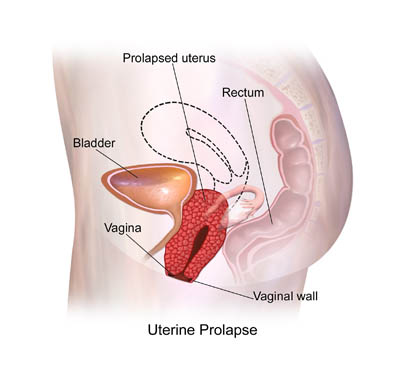
Treatment options include:
1. Non-Surgical Management:
- Pelvic Floor Exercises: Strengthening exercises, such as Kegels, to improve muscle tone.
- Pessary Insertion: A supportive device inserted into the vagina to hold the uterus in place.
2. Surgical Solutions:
- Vaginal Repair Surgery: Restores pelvic floor support by repairing weakened tissues.
- Laparoscopic Hysterectomy: For severe cases, Dr. Dogra performs minimally invasive uterus removal to relieve symptoms while ensuring quick recovery.

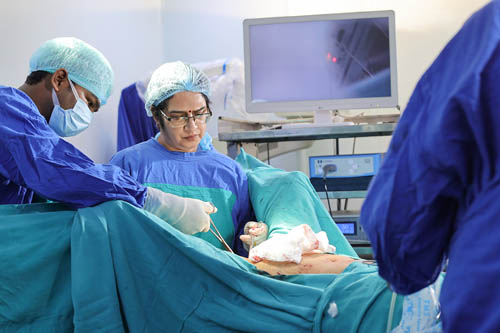
Why Choose Meerut Gynaecologist for Uterine Prolapse Treatment?
With Dr. Deepti Dogra’s extensive expertise and use of advanced techniques, Meerut Gynaecologist offers effective, minimally invasive solutions for uterine prolapse. Our compassionate team ensures personalized care tailored to each patient’s needs, helping them regain their health and confidence.
Reclaim Your Life Today!
Don’t let uterine prolapse keep you from enjoying life to the fullest. Book a consultation with Dr. Deepti Dogra at Meerut Gynaecologist and explore advanced treatment options in a supportive environment. Take the first step towards a healthier, more comfortable tomorrow!
FAQs for Uterine Prolapse at Meerut Gynaecologist
- Lifestyle Changes: Pelvic floor exercises like Kegels to strengthen muscles.
- Pessary Device: A non-surgical option to support the uterus.
- Surgical Solutions: Vaginal or abdominal surgery to repair tissues or remove the uterus (hysterectomy) in severe cases.

Vault Prolapse: Diagnosis and Treatment at Meerut Gynaecologist
Vault prolapse occurs when the top of the vagina (vaginal vault) descends into or outside the vaginal canal after a hysterectomy (surgical removal of the uterus). This condition arises due to weakened or damaged pelvic floor muscles and ligaments that fail to support the vaginal vault effectively. Vault prolapse can cause discomfort, urinary or bowel issues, and negatively impact a woman's quality of life.
Post-hysterectomy, the lack of uterine support can increase the likelihood of prolapse. The severity can range from mild cases, where the vault slightly drops, to severe cases, where it protrudes outside the vaginal opening. Early diagnosis and treatment are essential to prevent complications and restore pelvic health.
Causes of Vault Prolapse
- Pelvic floor muscle and ligament weakening post-hysterectomy.
- Increased intra-abdominal pressure due to obesity, chronic cough, or constipation.
- Multiple vaginal deliveries causing prior damage to the pelvic support system.
- Aging and reduced estrogen levels during menopause.
Symptoms of Vault Prolapse
- A feeling of heaviness or pulling in the pelvis.
- Bulging tissue in or outside the vaginal canal.
- Urinary issues such as incontinence, difficulty urinating, or frequent infections.
- Bowel problems like difficulty passing stools or incomplete evacuation.
- Discomfort or pain during sexual intercourse.
Diagnosis and Treatment by Dr. Deepti Dogra at Meerut Gynaecologist
Dr. Deepti Dogra specializes in diagnosing and treating vault prolapse with advanced, minimally invasive techniques at Meerut Gynaecologist. Diagnostic procedures include:
- Physical Examination: To evaluate the severity of the prolapse and identify any related complications.
- Imaging Tests: Ultrasound or MRI for detailed visualization of the pelvic organs and support structures.
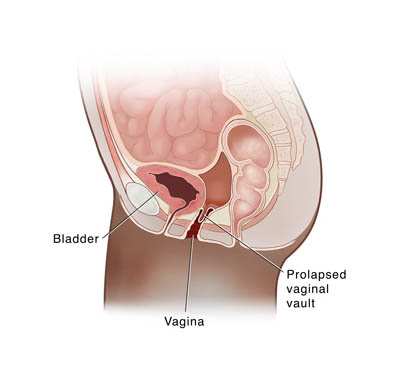
Treatment options include:
1. Non-Surgical Management:
- Pelvic Floor Therapy: Exercises to strengthen pelvic muscles and provide better support.
- Pessary Devices: Vaginal inserts designed to hold the vaginal vault in place and relieve symptoms.
2. Surgical Solutions:
- Sacrocolpopexy: A laparoscopic procedure where the vaginal vault is supported using a mesh attached to the sacrum, offering long-term relief.
- Colpocleisis: A procedure for older patients where the vaginal canal is closed partially to support the prolapsed tissue.
Why Meerut Gynaecologist for Vault Prolapse Treatment?
Dr. Deepti Dogra combines expertise and state-of-the-art surgical techniques to provide effective treatment for vault prolapse. At Meerut Gynaecologist, we prioritize patient comfort and quick recovery with minimally invasive procedures tailored to individual needs.
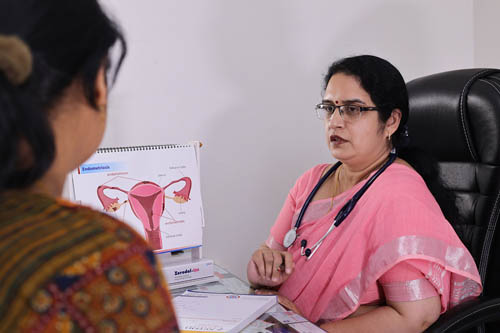
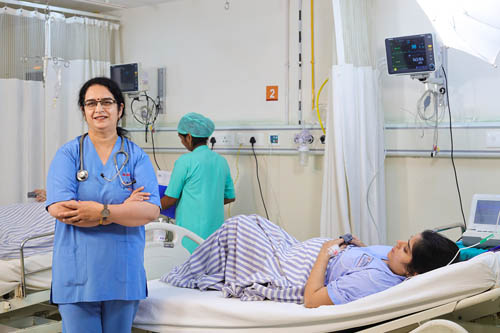
Restore Your Confidence and Comfort!
If you’re experiencing symptoms of vault prolapse, don’t wait. Book your consultation with Dr. Deepti Dogra at Meerut Gynaecologist today. Discover advanced and compassionate care designed to help you regain control of your health and well-being!
FAQs for Vault Prolapse at Meerut Gynaecologist
- Non-Surgical Methods: Pelvic floor exercises and pessary devices to support the vaginal vault.
- Surgical Options: Procedures like sacrocolpopexy or vaginal vault suspension to restore the vault’s position.


